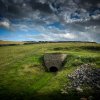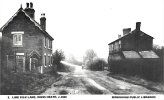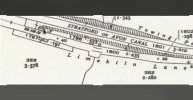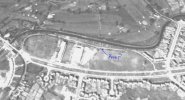-
Welcome to this forum . We are a worldwide group with a common interest in Birmingham and its history. While here, please follow a few simple rules. We ask that you respect other members, thank those who have helped you and please keep your contributions on-topic with the thread.
We do hope you enjoy your visit. BHF Admin Team
You are using an out of date browser. It may not display this or other websites correctly.
You should upgrade or use an alternative browser.
You should upgrade or use an alternative browser.
Lime Kiln Lane Kings Heath
- Thread starter Vivienne14
- Start date
BerksBrummie
New Member
Lime Kiln La. 1.5miles from Kings Heath east of Alcester Rd. A haunt in 60s. never like this. Stratford on Avon canal behind house on left. From old map these 3 long gone houses, about 1/2 way along the Lane.A 1930s view. Presumably the name of the Lanes refers back to its early history. Viv.
View attachment 173989
Attachments
A bit different today...

 www.google.co.uk
www.google.co.uk
There are narrow-boat moorings and boatyard alongside the canal, with a small chandler's shop - A surprisingly lovely place to enjoy an ice cream on a hot day...
Of course, the whole area is now dominated by the big Lidl store on the Junction of Limekiln Lane and the Warstock Road.
Google Maps
Find local businesses, view maps and get driving directions in Google Maps.
 www.google.co.uk
www.google.co.uk
There are narrow-boat moorings and boatyard alongside the canal, with a small chandler's shop - A surprisingly lovely place to enjoy an ice cream on a hot day...
Of course, the whole area is now dominated by the big Lidl store on the Junction of Limekiln Lane and the Warstock Road.
Last edited:
Aerial photograph from 1945 - Looks like the buildings were gone well before that date... I presume from the field edge markings that would have been around the spot indicated...Lime Kiln La. 1.5miles from Kings Heath east of Alcester Rd. A haunt in 60s. never like this. Stratford on Avon canal behind house on left. From old map these 3 long gone houses, about 1/2 way along the Lane.
Attachments
superdad3
master brummie
Limekiln LaneAerial photograph from 1945 - Looks like the buildings were gone well before that date... I presume from the field edge markings that would have been around the spot indicated...
Situated opposite the Horse Shoe pub on Millpool Hill on the south side of the Stratford Canal. The canal was completed in 1816 and provided a vital transport link between Birmingham and mid-Warwickshire for carrying coal and lime. It was also a local beauty spot and popular with trippers. Limekiln Lane may have been built when the canal was cut. Lime was brought in by the Stratford Canal Company. It was used for making mortar used the civil engineering construction industry. There is evidence that lime was probably burned on site or very nearby as there is a siding in the canal behind the Horseshoe pub [extract from Kings Heath Local History - Street name origins http://www.kingsheathhistory.co.uk/Kings_Heath_street_names.pdf]
That said, I think it very unlikely that "lime" [ie limestone] was ever burnt on the canal side. Limestone was heavy and unlikely to have been transported any distance from the quarry. It was usually "burnt" close to the quarry and the resulting "lime" [ie quicklime] was the product sent out by canal.
What you say is very true. Anyone who has walked a lot on the Limestone uplands of Northern Britain will have come across old Limestone kilns. I had a quick look at the geology in the area of Limekiln Lane to see if maybe the digging of the canal had uncovered an outcrop of limestone, but it is all mudstone in that area. However, looking into the history of lime making, at the end of the 1700s and into the 1800s a different dynamic came into play. As the British countryside became stripped of woods and forests and wood became expensive and in short supply, coal had to be used to produce the heat to turn limestone into Lime. One of the reasons for the Black Country shooting to predominance in the Industrial Revolution was the juxtaposition of both limestone and coal there. Across the country, the economic production of lime shifted to places where you could get both coal and Limestone cheaply transported to. Such places were sometimes remote from where both were mined, but equidistant in terms of the cost of shipping it. A lot of lime kilns were built at coastal ports where it was cheap to ship both lime and coal. The cost of Black Country limestone shot up as it shifted from being quarried to being mined (the caverns under Dudley Castle are the product of Limestone mining). It seems that for a time in the 1800s, there was an economic window when it made sense for quarried limestone from the Cotswolds to be shipped up the Stratford-on-Avon canal to meet up with coal from the Black Country coalfields sent down the canal from the junction to the Worcester canal. Interestingly, only a few miles East along the Stratford-on-Avon canal is another road parallel with the canal called Limekiln Lane, which suggests there might have been a whole series of lime kilms in the area during that brief economic "window" in the 1800s.Limekiln Lane
Situated opposite the Horse Shoe pub on Millpool Hill on the south side of the Stratford Canal. The canal was completed in 1816 and provided a vital transport link between Birmingham and mid-Warwickshire for carrying coal and lime. It was also a local beauty spot and popular with trippers. Limekiln Lane may have been built when the canal was cut. Lime was brought in by the Stratford Canal Company. It was used for making mortar used the civil engineering construction industry. There is evidence that lime was probably burned on site or very nearby as there is a siding in the canal behind the Horseshoe pub [extract from Kings Heath Local History - Street name origins http://www.kingsheathhistory.co.uk/Kings_Heath_street_names.pdf]
That said, I think it very unlikely that "lime" [ie limestone] was ever burnt on the canal side. Limestone was heavy and unlikely to have been transported any distance from the quarry. It was usually "burnt" close to the quarry and the resulting "lime" [ie quicklime] was the product sent out by canal.
Link to the other "Limekiln Lane" on Google Maps.
Google Maps
Find local businesses, view maps and get driving directions in Google Maps.
 www.google.co.uk
www.google.co.uk
That's interesting about the lime shipping routes. I've just been reading about the Luckcock brothers, Urban and Felix, of the Birmingham Political Union, who were lime dealers in the 1830s. Felix was a wharfinger at Cambridge Street Wharf on the Fazeley Canal, which I imagine would have been a good distribution point for lime delivered from the lime kilns. The brothers were in that line from at least 1830 until Urban's death in 1837 and Felix's bankruptcy in 1839.
What you say is very true. Anyone who has walked a lot on the Limestone uplands of Northern Britain will have come across old Limestone kilns. I had a quick look at the geology in the area of Limekiln Lane to see if maybe the digging of the canal had uncovered an outcrop of limestone, but it is all mudstone in that area. However, looking into the history of lime making, at the end of the 1700s and into the 1800s a different dynamic came into play. As the British countryside became stripped of woods and forests and wood became expensive and in short supply, coal had to be used to produce the heat to turn limestone into Lime. One of the reasons for the Black Country shooting to predominance in the Industrial Revolution was the juxtaposition of both limestone and coal there. Across the country, the economic production of lime shifted to places where you could get both coal and Limestone cheaply transported to. Such places were sometimes remote from where both were mined, but equidistant in terms of the cost of shipping it. A lot of lime kilns were built at coastal ports where it was cheap to ship both lime and coal. The cost of Black Country limestone shot up as it shifted from being quarried to being mined (the caverns under Dudley Castle are the product of Limestone mining). It seems that for a time in the 1800s, there was an economic window when it made sense for quarried limestone from the Cotswolds to be shipped up the Stratford-on-Avon canal to meet up with coal from the Black Country coalfields sent down the canal from the junction to the Worcester canal. Interestingly, only a few miles East along the Stratford-on-Avon canal is another road parallel with the canal called Limekiln Lane, which suggests there might have been a whole series of lime kilms in the area during that brief economic "window" in the 1800s.
Link to the other "Limekiln Lane" on Google Maps.

Google Maps
Find local businesses, view maps and get driving directions in Google Maps.www.google.co.uk
That certainly makes sense to have both resources accessible at a lime kiln site. This lime kiln in the Peak District is adjacent to The High peak Trail, a disused railway.

superdad3
master brummie
What an interesting thread.
My wife was born and bred near the canal/Limekiln Lane and tells me it was spoken as "Limkin" Lane locally when she was a child [1950s].
I guess there must have been lime kilns there for it to be so named. Although lime kilns were very rare in Birmingham, there was a block of five in Selly Oak near the junction of the Worcester/Birmingham and the Dudley no. 2 canals, between the canal and Bristol Road. There is a very good article about these on the BCC website which says that Limestone and coal would have been brought along the canal from Dudley.
Is it possible that both limestone and coal was also delivered to the kilns in Warstock from Dudley? There was a canal link.
[see article at https://www.birmingham.gov.uk/info/50064/birminghams_archaeology/980/lime_kilns_in_selly_oak]

My wife was born and bred near the canal/Limekiln Lane and tells me it was spoken as "Limkin" Lane locally when she was a child [1950s].
I guess there must have been lime kilns there for it to be so named. Although lime kilns were very rare in Birmingham, there was a block of five in Selly Oak near the junction of the Worcester/Birmingham and the Dudley no. 2 canals, between the canal and Bristol Road. There is a very good article about these on the BCC website which says that Limestone and coal would have been brought along the canal from Dudley.
Is it possible that both limestone and coal was also delivered to the kilns in Warstock from Dudley? There was a canal link.
[see article at https://www.birmingham.gov.uk/info/50064/birminghams_archaeology/980/lime_kilns_in_selly_oak]

Very interesting indeed. However, would it really make sense to bring both coal and limestone from Dudley, where they are found close together, all the way to Selly Oak or Warstock and then use them to produce lime? - There were lots of Lime Kilns in Dudley (there's still a line of them beside the canal at the Black Country Museum) - As per your original post, wouldn't it be more economical to produce the Lime in Dudley and then ship only the lime out by canal? - Now there isn't that much Limestone in Dudley (relatively speaking) - it's a band that runs through the hill on which Dudley Castle is built and the nearby Wrens Nest and Hursthill. As it was worked out it would have become more and more expensive. Meanwhile, coal was plentiful, even though it had to be mined rather than quarried. The Birmingham canal network became the main way coal was moved around and the Stratford canal's main purpose was to take coal down to Stratford, and then via the River Avon to Evesham. Likewise the Worcester canal got coal down to places like Worcester, Tewkesbury, Gloucester and Cheltenham. Those coal barges would have been returning empty. What better way to more money than to load them up with cheap limestone quarried from the Cotswolds (which has vast areas of it) and take it closer to Birmingham to be turned into Lime at places like Warstock and Selly Oak? - I'm probably putting two and two together and making five - Just a thought.What an interesting thread.
My wife was born and bred near the canal/Limekiln Lane and tells me it was spoken as "Limkin" Lane locally when she was a child [1950s].
I guess there must have been lime kilns there for it to be so named. Although lime kilns were very rare in Birmingham, there was a block of five in Selly Oak near the junction of the Worcester/Birmingham and the Dudley no. 2 canals, between the canal and Bristol Road. There is a very good article about these on the BCC website which says that Limestone and coal would have been brought along the canal from Dudley.
Is it possible that both limestone and coal was also delivered to the kilns in Warstock from Dudley? There was a canal link.
[see article at https://www.birmingham.gov.uk/info/50064/birminghams_archaeology/980/lime_kilns_in_selly_oak]
View attachment 184165
Hello folks, very long shot this one
Dinger mentioned :-
'LYONS BOAT YARD LTD - UK Birmingham Stratford Canal Day Boat Hire and Moorings - Birmingham Day Boat Hire - Midlands Day Boat Hire - Narrow boat repairs, Services ,Boat Blacking & Breakdown - Chandlery & Shop - LPG, Red Diesel, Coal'.
Anyone know if the above was a relation of Charles Lyons (1850- 1919) who farmed then ran a market garden on Haunch Lane and supplied his shop on the Alcester Road in Kings Heath (between Mossfield and Addison Roads)?
Dinger mentioned :-
'LYONS BOAT YARD LTD - UK Birmingham Stratford Canal Day Boat Hire and Moorings - Birmingham Day Boat Hire - Midlands Day Boat Hire - Narrow boat repairs, Services ,Boat Blacking & Breakdown - Chandlery & Shop - LPG, Red Diesel, Coal'.
Anyone know if the above was a relation of Charles Lyons (1850- 1919) who farmed then ran a market garden on Haunch Lane and supplied his shop on the Alcester Road in Kings Heath (between Mossfield and Addison Roads)?
The Website for the boatyard says it's "long established" - But it also says the current owners have "only" been there for 20 years. Neither of the currently-named owners is called "Lyons".- There is a contact email address on the website. Might be worthwhile dropping them a line to see if they know anything about the longer-term history of the site. - Old maps show a wharf on the site going back to at least 1883 but it isn't named.Hello folks, very long shot this one
Dinger mentioned :-
'LYONS BOAT YARD LTD - UK Birmingham Stratford Canal Day Boat Hire and Moorings - Birmingham Day Boat Hire - Midlands Day Boat Hire - Narrow boat repairs, Services ,Boat Blacking & Breakdown - Chandlery & Shop - LPG, Red Diesel, Coal'.
Anyone know if the above was a relation of Charles Lyons (1850- 1919) who farmed then ran a market garden on Haunch Lane and supplied his shop on the Alcester Road in Kings Heath (between Mossfield and Addison Roads)?
Thanks Dinger
Will try contacting the current owners. I worked with a bunch of volunteers in 1963 to try and re float a sunken narrow boat at the wharf so it could be moved for restoration. Not my idea of fun spending the weekend waist deep in cold water (but I had a persuasive girlfriend!) There were a few old sheds there then, but not much activity.
My interest goes back a little further with the Lyons in the previous post, and a Cyril Adams Banister who married Lilian Rann on the 25th August 1918 by licence at the Aston Register Office. Cyril was a boat builder, his father a boat proprietor and his mother a coal merchant. The family home was close to the Fellows Morton and Clayton boat yard in Saltley, while Cyril lived in one of the Lime Kiln Cottages in the photo above in this thread. He was working at the wharf although I don't know who for. He was doing quite well so I assume the wharf was busy following WW1.
As a postscript, Lillian (a music hall artist) wandered off to live with a musician and Cyril emigrated to the Canadian Great Lakes and Canals. He still built boats, filed for divorce, remarried and was successful. Lilian ended up marrying 5 times, the last being my grandfather.
Will try contacting the current owners. I worked with a bunch of volunteers in 1963 to try and re float a sunken narrow boat at the wharf so it could be moved for restoration. Not my idea of fun spending the weekend waist deep in cold water (but I had a persuasive girlfriend!) There were a few old sheds there then, but not much activity.
My interest goes back a little further with the Lyons in the previous post, and a Cyril Adams Banister who married Lilian Rann on the 25th August 1918 by licence at the Aston Register Office. Cyril was a boat builder, his father a boat proprietor and his mother a coal merchant. The family home was close to the Fellows Morton and Clayton boat yard in Saltley, while Cyril lived in one of the Lime Kiln Cottages in the photo above in this thread. He was working at the wharf although I don't know who for. He was doing quite well so I assume the wharf was busy following WW1.
As a postscript, Lillian (a music hall artist) wandered off to live with a musician and Cyril emigrated to the Canadian Great Lakes and Canals. He still built boats, filed for divorce, remarried and was successful. Lilian ended up marrying 5 times, the last being my grandfather.
Interesting story! - Best of luck on your quest.Thanks Dinger
Will try contacting the current owners. I worked with a bunch of volunteers in 1963 to try and re float a sunken narrow boat at the wharf so it could be moved for restoration. Not my idea of fun spending the weekend waist deep in cold water (but I had a persuasive girlfriend!) There were a few old sheds there then, but not much activity.
My interest goes back a little further with the Lyons in the previous post, and a Cyril Adams Banister who married Lilian Rann on the 25th August 1918 by licence at the Aston Register Office. Cyril was a boat builder, his father a boat proprietor and his mother a coal merchant. The family home was close to the Fellows Morton and Clayton boat yard in Saltley, while Cyril lived in one of the Lime Kiln Cottages in the photo above in this thread. He was working at the wharf although I don't know who for. He was doing quite well so I assume the wharf was busy following WW1.
As a postscript, Lillian (a music hall artist) wandered off to live with a musician and Cyril emigrated to the Canadian Great Lakes and Canals. He still built boats, filed for divorce, remarried and was successful. Lilian ended up marrying 5 times, the last being my grandfather.




